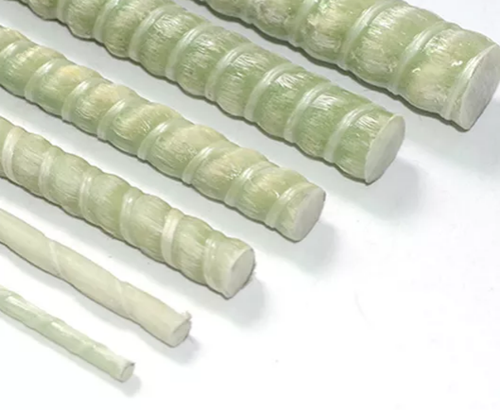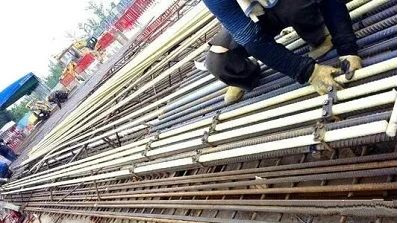
NANJING EFG CO., LTD., expert of wateproof frame materials

1. Introduction
As necessary equipment in the chemical industry, an electrolytic cell is often corroded by chemical substances. Over time, the service performance and service life of the electrolytic cells will be affected, especially the problem of production safety. Therefore, it is urgent to take certain anti-corrosion measures to protect the device. Now some enterprises adopt anti-corrosion measures such as rubber, plastic, and vulcanized butyl rubber, but the anti-corrosion effect is not ideal. Most of them have an obvious initial anti-corrosion effect, but the anticorrosion time can only be maintained for 1-2 years, and the later damage effect is serious.
From the technical and economic aspects, the glass fiber composite reinforcement is the best choice as the chemical corrosion-resistant material of the anti-corrosion layer of the electrolytic cell. In addition to its excellent mechanical properties, glass fiber composite tendons are also excellent in chemical corrosion resistance. As the most widely used and corrosion-resistant material, glass fiber composite reinforcement is suitable for various equipment in contact with chlorine, alkali, hydrochloric acid, brine, water, and other media. In this paper, the application of a glass fiber composite reinforcement with glass fiber as reinforcement material and resin as matrix material in the anticorrosive layer of an electrolytic cell are briefly described.
2. Analysis of corrosion failure factors in an electrolytic cell
The main reason for the corrosion of the electrolytic cell is the influence of the external corrosion medium, except the material, structure, and furnace construction technology of the electrolytic cell itself. Generally, the corrosion media affecting the electrolytic cell are: high-temperature wet chlorine gas, high-temperature sodium chloride solution, chlorine alkali solution, and high temperature saturated chlorine water vapor, and at the same time, it is also corroded by the stray current in the electrolysis process.
The high-temperature wet chlorine produced in the anode chamber of the electrolytic cell will bring out a large amount of water vapor, and the hydrolysis of chlorine gas will produce highly corrosive hydrochloric acid and highly oxidizing hypochlorous acid. The resulting hypochlorite can be decomposed to release new ecological oxygen. The chemical properties of these media are very active, except for titanium, most metal and non-metallic materials will suffer serious corrosion in this environment. I plant the original corrosion prevention measures for steel lining natural hard rubber, its temperature resistance range is 0-80℃, lower than the corrosion environment temperature, and natural hard rubber is not resistant to hydrochloric acid corrosion, lining layer in the steam-liquid environment is easy to suffer corrosion damage, resulting in metal shell corrosion perforation and failure.
3. Glass Fiber Reinforced Properties
Fiberglass composite bars with tensile strength more than 2 times that of ordinary copper bars and steel bars of the same size; their density is g/cm 1.25-2.13Between, only for the conventional ordinary steel bar about 1/4. The main technical indexes of glass fiber composite bars and their comparison with steel bars and copper bars are as follows
Table 1 Technical specifications of glass fiber composite reinforcement and its comparison with a steel bar and copper bar
Name of name | Glass fiber composite reinforcement | Steel bars | Copper bars |
Density g/cm3) | 1.25-2.1 | 7.8-7.9 | 8.9 |
tensile strength (MPa) | ≥600 | ≥500 | ≥430 |
Yield strength (MPa) | ≥600 | ≥300 | ≥340 |
Compressive strength (MPa) | ≥500 | - | - |
Elastic modulus (GPa) | ≥40 | 210 | 110 |
Elongation (%) | ≥1.5 | ≥1.8 |
The low density of glass fiber composite reinforcement reduces the weight of the construction project itself and makes the transportation, construction and installation process more convenient; the tensile strength of glass fiber composite reinforcement is extremely high, and the composite reinforcement will not produce substantial deformation when it reaches the limit of tensile strength; the glass fiber composite reinforcement is easy to cut and easy to construct: the cutter head can be cut directly. Different specifications and non-standard parts can be produced according to different engineering requirements.

4. Application
4.1 Glass-fiber Reinforced Properties
Glass fiber composite reinforcement is a new composite material formed by pultrusion process and special surface treatment with glass fiber as reinforcing material, resin as matrix material and proper amount of auxiliary agent (such as crosslinked monomer, initiator, accelerator, alteration agent, flame retardant, inhibitor, filler, pigment, etc.) added①In addition to the excellent mechanical properties, the chemical properties of glass fiber composite bars are also better among several fiber composites, especially the corrosion resistance of acid-alkali solution is incomparable to that of any other fiber material products. Secondly, the glass fiber composite reinforcement has good corrosion resistance, a small thermal expansion coefficient, good elasticity and toughness, and a combination of glass fiber and resin. The corrosion resistance of glass fiber composite reinforcement is further strengthened. Due to the outstanding chemical properties of glass fiber composite reinforcement, it is the best choice for electrolytic cell anticorrosion materials.
4.2 Structure Design of Glass Fiber Reinforcement in Electrolytic Cell
In the electrolytic cell, the glass fiber reinforcement is distributed parallel to each other in the cell wall, and the vinyl resin concrete is poured between the glass fiber composite reinforcement to make it solidify into a whole. In this way, the electrolytic cell is stronger, the acid and alkali resistance is better, the space in the cell is large, the insulation is good, the maintenance times are reduced, and the service life cycle is prolonged, especially the electrolysis process with strong strength, bending resistance and tensile resistance.
4.3 Advantages of Glass Fiber Reinforcement in Electrolytic Cell
At present, the corrosion prevention method of an electrolytic cell is mainly resin pouring concrete electrolytic cell or lining FRP in the concrete cell wall. However, because the quality of the electrolytic cell of concrete is too heavy and the curing period is too long, the FRP lined on the inner wall can only be prepared by manual paste, the efficiency is very low, and the density of the FRP layer is low. Moreover, the transportation cost of FRP corrosion-resistant electrolytic cell is high, and the installation and maintenance are extremely inconvenient. Using glass fiber composite reinforcement as corrosion material of electrolytic cell can overcome the disadvantages of large weight, small bearing capacity, easy corrosion, bending resistance, tensile resistance, and acid-alkali corrosion resistance. At the same time, the electrolytic cell has sufficient capacity, high bearing capacity, long service period, fewer maintenance times, and the cell body is light and exquisite, easy to lift, easy to transport, and so on.
5. Summary
Glass fiber composite reinforcement combines the excellent mechanical, physical, and chemical properties of resin and glass fiber, and has been widely used to solve the corrosion problem of Chlor-alkali industry, tunnel, pavement, and bridge deck concrete structure. Through the careful detection and identification of the electrolytic cell with glass fiber reinforcement, it can be scientifically and objectively known that the application of glass fiber composite reinforcement can enhance the corrosion resistance and service cycle of the electrolytic cell, and at the same time improve the safety of production. Therefore, this application has a broad prospect and is worth popularizing widely.
Copyright © 2019 NANJING EFG CO., LTD. | All Rights Reserved
We are here to help you! If you close the chatbox, you will automatically receive a response from us via email. Please be sure to leave your contact details so that we can better assist